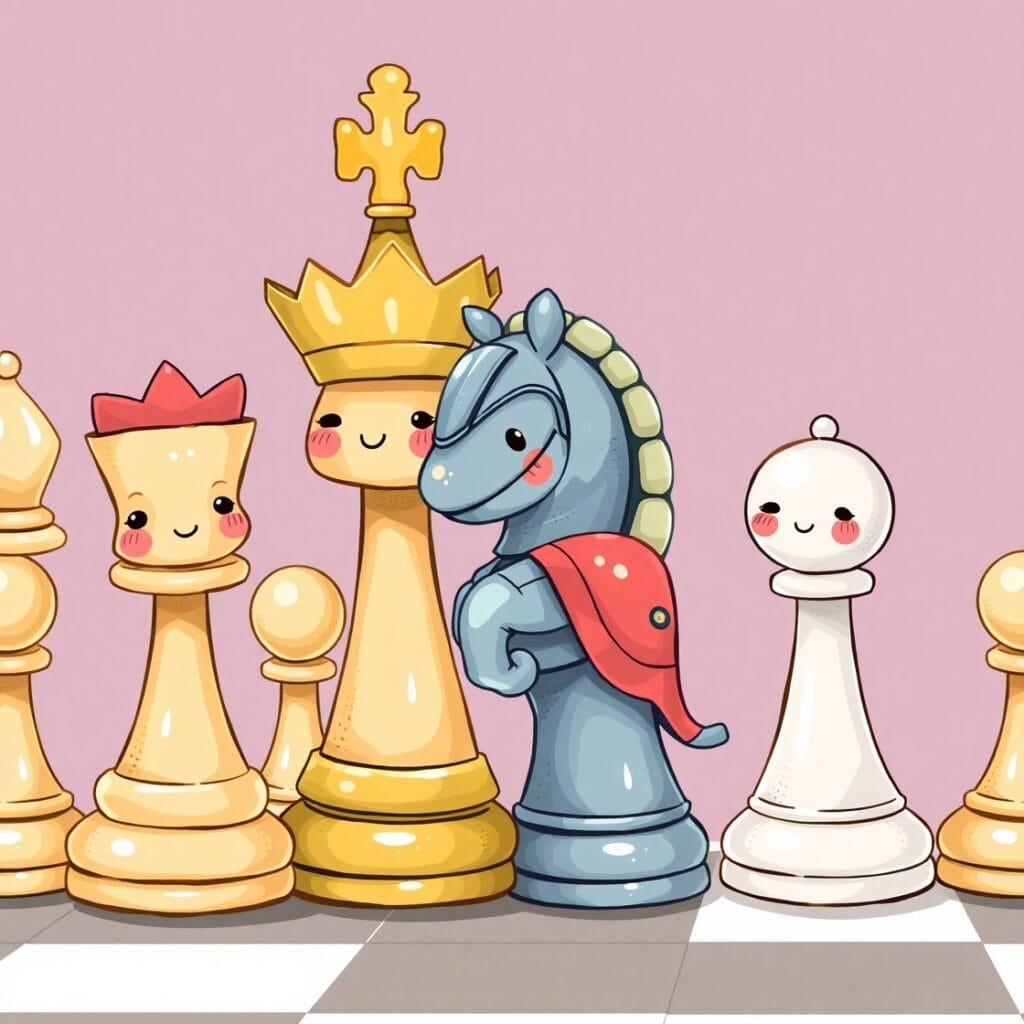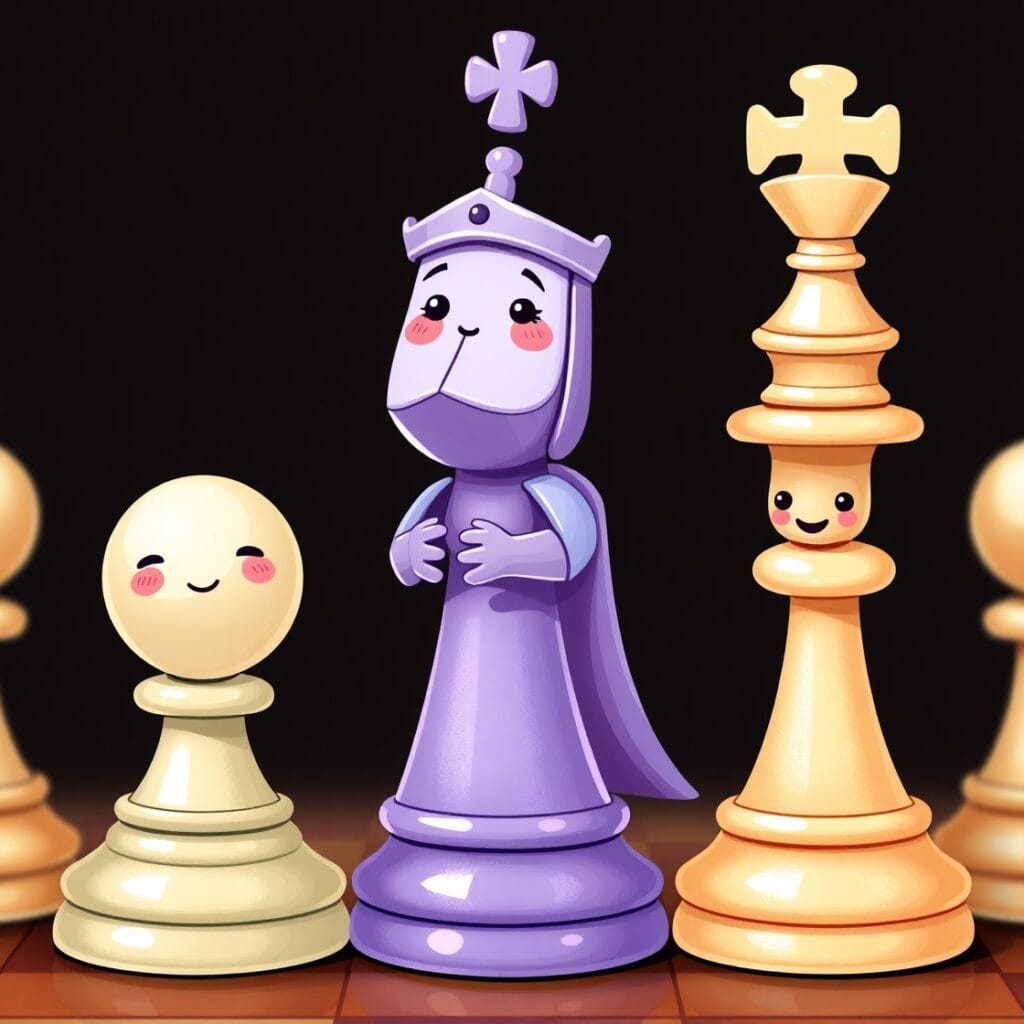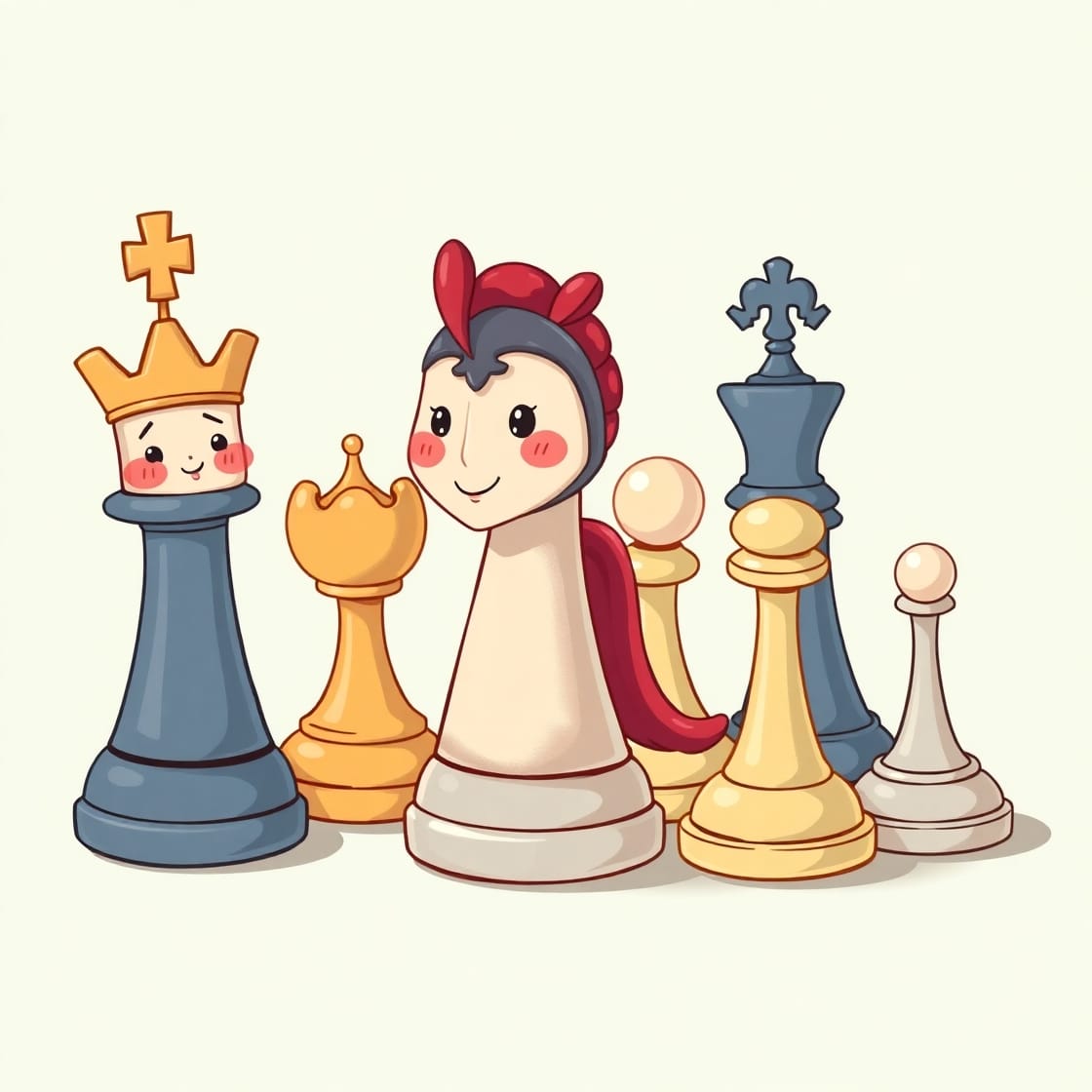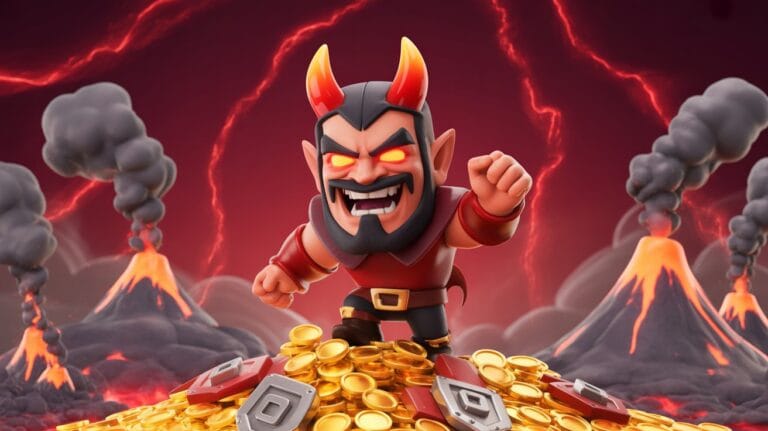Chess is not just a game — it’s a timeless battle of minds that has captivated millions across the globe for centuries. With roots dating back over a millennium, this classic game has evolved from royal courts to digital platforms, remaining a universal symbol of intelligence and strategy.
In this guide, we’ll explore:
- Who created chess and its fascinating history
- The rules and objectives
- Explanation of the chessboard and pieces
- Step-by-step guide to playing
- Key strategies for winning
- Famous chess legends
- How to improve and learn
Let’s dive deep into the world of 64 squares!
1. Who Created Chess? A Journey Through History
Origins in India: Chaturanga
Chess originated in India around the 6th century AD, known back then as Chaturanga. This game simulated a battlefield with four divisions of the military: infantry, cavalry, elephants, and chariots — which later evolved into pawns, knights, bishops, and rooks respectively.
Spread to Persia: Shatranj
As Chaturanga spread to Persia, it transformed into Shatranj, with more structured rules. Persian literature often referenced the game, especially among scholars and nobles. The fall of the Persian Empire and the rise of Islam led to its spread across the Muslim world.
Europe’s Adoption
By the 10th century, Shatranj reached Europe via Spain and Italy. Europeans modified the game, enhancing the movements of the queen and bishop, making it faster and more dynamic.
Modern Chess
By the 15th century, the game closely resembled what we know today. The first World Chess Championship was held in 1886. Since then, it has grown into a global sport with grandmasters, AI engines, and millions of enthusiasts.

2. Understanding the Chessboard
Layout
A chessboard consists of 8×8 squares, alternating between light and dark colors. The board is always set so that each player has a light square in the bottom-right corner.
Files and Ranks
- Files: Vertical columns labeled a to h
- Ranks: Horizontal rows labeled 1 to 8
Each square can be identified by its file and rank — for example, “e4” or “d5”.
3. Meet the Pieces
Each player starts with 16 pieces:
| Piece | Number per player | Symbol | Movement |
|---|---|---|---|
| Pawn | 8 | ♙ | One square forward (two from start), captures diagonally |
| Rook | 2 | ♖ | Horizontally or vertically any number of squares |
| Knight | 2 | ♘ | L-shape: two squares in one direction, then one sideways |
| Bishop | 2 | ♗ | Diagonally any number of squares |
| Queen | 1 | ♕ | Any number of squares in any direction |
| King | 1 | ♔ | One square in any direction |
4. Objective of the Game
The primary goal of chess is to checkmate your opponent’s king. This means the king is under threat of capture (in check) and there is no legal move to escape the threat.
5. How to Set Up the Game
- Place the rooks in the corners.
- Place knights next to the rooks.
- Then the bishops.
- The queen goes on her own color (white queen on white square).
- Place the king next to the queen.
- Fill the second row with pawns.
White moves first!
6. Step-by-Step
Step 1: Opening the Game
- Control the center (e4, d4, e5, d5).
- Develop your knights and bishops.
- Protect your king by castling early.
Step 2: Middlegame
- Start attacking your opponent’s pieces.
- Watch out for forks, pins, and skewers.
- Look for weaknesses in your opponent’s position.
Step 3: Endgame
- Use your king actively.
- Promote pawns when possible.
- Aim for checkmate using techniques like back rank mates or king-rook coordination.

7. Special Moves
Castling
A move involving the king and rook. Conditions:
- Neither piece has moved.
- No pieces between them.
- The king is not in check or moving through check.
En Passant
When a pawn moves two squares forward from its initial position and lands beside an opponent’s pawn, that pawn can capture it as if it had moved one square.
Pawn Promotion
When a pawn reaches the 8th rank, it can be promoted to a queen, rook, bishop, or knight — usually a queen.
8. Popular Chess Openings
Some commonly used openings include:
- Ruy López (1. e4 e5 2. Nf3 Nc6 3. Bb5)
- Sicilian Defense (1. e4 c5)
- Queen’s Gambit (1. d4 d5 2. c4)
- King’s Indian Defense (1. d4 Nf6 2. c4 g6)
Understanding and practicing openings help establish early control and lead to stronger positions.
9. Basic Chess Strategies
Control the Center
The central squares (d4, d5, e4, e5) offer greater mobility for your pieces.
Develop Your Pieces
Bring all your pieces into play early. Don’t move the same piece multiple times in the opening.
King Safety
Castle early to protect your king and connect your rooks.
Avoid Hanging Pieces
Never leave a piece unprotected unless it’s a trap!
Think Ahead
Always calculate your moves and anticipate your opponent’s responses.
10. Famous Players
Garry Kasparov
World Champion from 1985 to 2000. Known for deep preparation and sharp tactics.
Magnus Carlsen
World Champion since 2013. Praised for endgame prowess and universal style.
Bobby Fischer
First American World Champion. Known for his 1972 win against Boris Spassky.
Viswanathan Anand
Indian Grandmaster and former World Champion. A pioneer for chess in India.
11. Chess in the Digital Age
Today, chess is booming online. Platforms like:
- Chess.com
- Lichess.org
- Chess24
- Play Magnus
offer free and premium games, puzzles, lessons, and tournaments. AI engines like Stockfish and AlphaZero have also revolutionized chess analysis.
12. Tips to Get Better
Practice Daily
Even 15-30 minutes of practice daily can yield progress.
Solve Puzzles
Improve tactical awareness by solving puzzles on apps or websites.
Study Classic Games
Learn from the masters. Analyze how they open, transition to the middlegame, and finish games.
Use Engines
Review your games with engines to find mistakes and blunders.
Play With Better Players
You’ll improve faster when challenged.
13. Chess Variants You Should Try
To spice things up, explore variants like:
- Blitz (Fast Games)
- Bullet (Superfast Games)
- Chess960 (Fischer Random)
- Bughouse (Team Chess)
- 3-Check (Win by Checking Three Times)
14. Why Chess Is Great for You
Playing is not just fun — it’s scientifically proven to benefit your mind:
- Improves memory
- Boosts concentration
- Enhances problem-solving
- Builds patience and discipline
- Reduces stress and anxiety
Conclusion
Chess is an eternal game of wits, history, and strategy. From the dusty courts of India to grand tournaments in global arenas, its essence remains the same: think before you move.
Whether you’re a curious beginner or a seasoned player, the journey in chess never ends. Every game teaches you something new.
So grab your board, set up your pieces, and enter a world where every move matters.
Start your journey today!
CHESS BOARDS 50% OFF IN AMAZON.

The beauty of the 64-square battlefield lies not just in knowing how the pieces move, but in the infinite layers of thinking behind each turn. Let’s dive deeper into what separates casual players from true strategists and how the modern era has elevated the way the game is played, studied, and enjoyed.
The Psychology of Play
Success in this ancient strategy game like chess depends not only on memorizing patterns or learning classic positions but also on understanding human behavior.
Top players often talk about reading an opponent’s body language, emotional cues, or playing style. Some players are aggressive attackers, while others wait patiently like snipers for a single mistake. Knowing what kind of thinker sits across from you can often be more important than knowing the perfect line.
Emotional control is critical. The ability to stay calm under pressure in chess, recover from a blunder, or keep focus through a long positional grind can be the difference between winning and folding.
Tactical Themes That Dominate in 2025
As strategy evolves with technology and time, so do the go-to techniques. In today’s competitive landscape, certain tactics and motifs are more essential than ever.
- Double Attack: Threatening two targets at once is still one of the most powerful tools. Knights and queens excel at this.
- Skewers & Pins: Controlling powerful linear paths, especially with rooks and long-range pieces, remains a cornerstone of play.
- Back Rank Pressure: Exploiting uncastled or poorly defended positions on the last row continues to win games at all levels.
- Zugzwang: Forcing an opponent into a position where any move worsens their situation is a sign of deep mastery.
Players in 2025 often combine these motifs into multi-layered traps, thanks to their exposure to high-speed training software and top-tier engine suggestions.
If you know how to play chess , your in the 20% people on earth.
Opening Philosophy, Not Just Memorization
Gone are the days when blindly memorizing 20-move sequences guaranteed success. In today’s meta, understanding the why behind each early play matters more than the what.
Modern learners focus on principles:
- Develop minor units early and efficiently
- Maintain central influence
- Avoid moving the same piece twice unless necessary
- Prioritize safety, especially for the commander unit
With dynamic variations constantly emerging in top-tier matches, adaptability trumps rote repetition.
Role of Artificial Intelligence
Training in the modern era is heavily influenced by advanced engines like Stockfish 16, Leela Zero, and proprietary models built into premium platforms. These engines simulate human-like ideas but with surgical precision.
Players now spend hours reviewing their own performances using in-depth evaluations that detect not only errors but missed opportunities. AI-generated suggestions often include daring sacrifices and positional maneuvers that weren’t considered optimal even a decade ago.
Thanks to these tools, aspiring learners can replicate grandmaster-level training routines right from their mobile devices.
Grandmasters in the Streaming Era
The digital boom brought the strategic battlefield into living rooms around the world. Popular creators, influencers, and grand-level professionals stream their games, analyze tactics, and engage with global audiences in real time.
Some of the most-followed tactical masters have YouTube channels or Twitch streams where viewers witness real-time breakdowns of complex endgames or spectacular finishes. Learning through observation has never been more accessible.
This blend of education and entertainment has grown the audience immensely, especially among younger demographics who grew up with content-first platforms.
Building Your Skillset: Step-by-Step Routine
If you’re aiming to rise through the ranks and start beating stronger opponents consistently, consider this daily routine that players in 2025 swear by:
- Tactical Warmup (15 minutes)
Solve 5–10 mid-level puzzles. Focus on ideas, not just correct moves. - Analyze One Classic Game (20 minutes)
Choose a game from a legendary player and go through it slowly. Try to guess the next move before revealing it. - Play a Training Match (30 minutes)
Use a timer. Aim for a 10+5 format (10 minutes with a 5-second increment). Focus on quality, not speed. - Post-Game Analysis (15 minutes)
Use an engine or review on your own. Identify three things you did well and three areas to improve. - Study an Endgame (10 minutes)
Practice king and pawn versus king, opposition concepts, or rook coordination.
Total: 90 minutes — a compact but powerful routine.
Top Online Platforms to Learn and Play
Thousands of new players in 2025 are learning the game digitally. Some top-rated platforms include:
- Lichess.org: Completely free, ad-free, and open-source with great tools.
- Chess.com: Offers lessons, puzzles, and a vibrant community.
- Play Magnus Group: For deep analysis and training programs.
- Chessable: Interactive learning with a spaced repetition system.
Many of these platforms also allow playing against AI at different levels, ensuring that beginners aren’t overwhelmed, while advanced users still find a challenge.
Communities and Tournaments
Whether you’re competing in online blitz events or attending national-level opens, the thrill of competition drives many players forward.
2025 has seen a boom in hybrid tournaments — online qualifiers with in-person finals. Apps and digital clocks now sync with cloud servers, allowing scorekeeping, analysis, and live streaming without delay.
Communities on Reddit, Discord, and even Instagram now feature puzzles, memes, match reviews, and discussions around new strategies.
Game Without Borders
One of the most remarkable aspects of this discipline is how it transcends culture, language, and even age. A 10-year-old in Mumbai can play a grandmaster from Germany. A 70-year-old retiree in Tokyo can find a match with a college student in Canada.
The universal rules and digital tools make it an arena of true equality — all that matters is skill.
Philosophical Lessons From the 64 Squares
There’s a reason this game has lasted centuries. Beyond tactics and calculation, it teaches valuable life lessons:
- Think Before You Act: Every move has consequences.
- Adaptability: No two games are alike. You must adjust to survive.
- Patience: Rushing often leads to disaster.
- Respect: For your opponent, for the position, and for the process.
- Resilience: You will lose — how you recover matters more.
Many top executives, artists, athletes, and thinkers point to this game as one that taught them discipline, logic, and emotional balance.
Final Thoughts
This ancient game remains one of the most deeply enriching experiences you can engage in — mentally, emotionally, and even socially. Whether you’re looking to relax, compete, or just sharpen your thinking, it’s the ultimate training ground for the brain.
As the community grows and technology evolves, one thing is certain: the timeless allure of kings, queens, and pawns continues to inspire, teach, and challenge millions across the world.
The Game That Shapes Minds Beyond the Board
One of the most underrated benefits of this timeless battle is the way it sharpens life skills. From children in classrooms to CEOs in boardrooms, countless individuals have credited this mental sport with improving the way they think, react, and make decisions.
Discipline and Patience
Unlike fast-paced video games or casual distractions, this strategy-based pursuit demands concentration. Players often spend hours studying patterns, calculating multiple outcomes, and waiting for the perfect opportunity. This teaches patience in a world where instant gratification is the norm.
You learn that progress isn’t instant — it’s earned. Each move requires thought, and each outcome requires reflection. This mindset translates to better habits in daily life, from studying and working to communicating more clearly.
Emotional Resilience
Emotional control is key. A single misstep can shift the entire flow of the game. One wrong move — caused by frustration, overconfidence, or carelessness — could cost a hard-fought battle. Players must learn to handle both victory and defeat with humility and composure.
This emotional resilience helps in real-world scenarios: job interviews, exams, or tough conversations. When the pressure builds, the calm thinker often finds the best solution.
Strategic Thinking in Real Life
Whether you’re negotiating a deal, planning a project, or navigating a relationship, the ability to look ahead, anticipate reactions, and make wise decisions is incredibly valuable.
Just like on the board, life rarely rewards rushed decisions. Those who take the time to weigh options and calculate risks often find success. This sport teaches you to assess the whole picture, not just react to the current moment.
Global Language of Intelligence
Despite its simple tools — 16 pieces per side, 64 squares — this game speaks a universal language. No matter where you’re from, how old you are, or what you do for a living, the skills learned here bring people together.
In many schools, it’s part of cognitive development programs. In prisons, it’s used as a tool for rehabilitation. In corporations, it’s viewed as leadership training.
It’s more than a game chess — it’s a discipline, a mentor, and a mirror to one’s mind.






